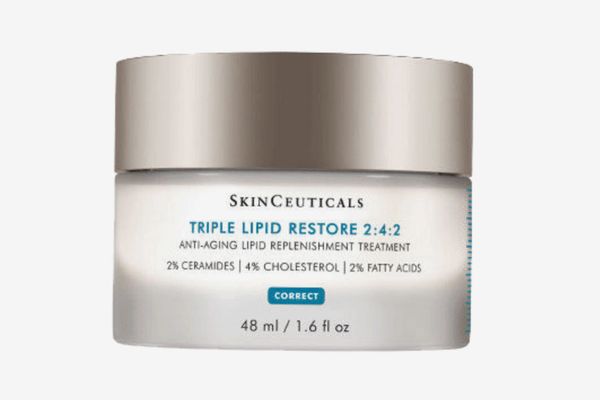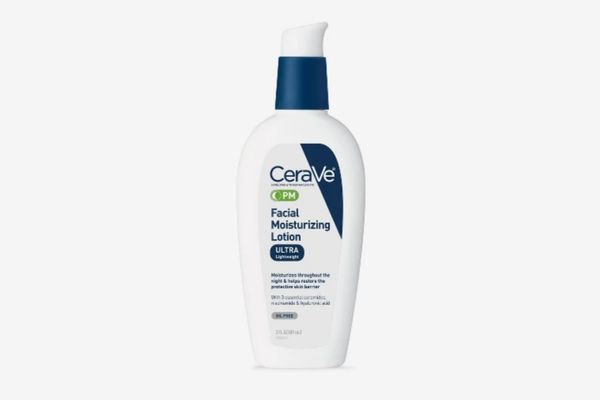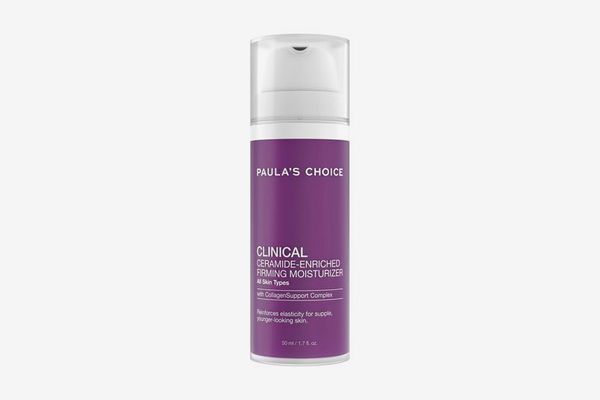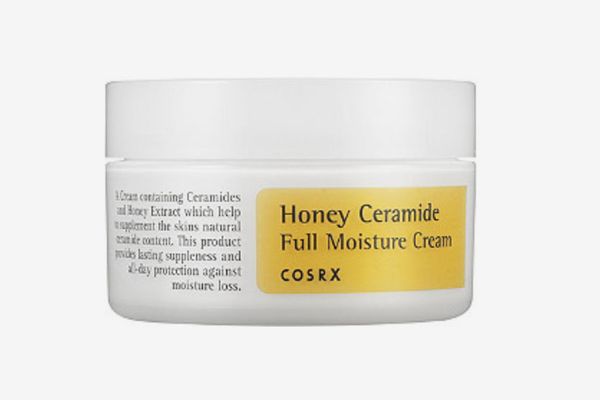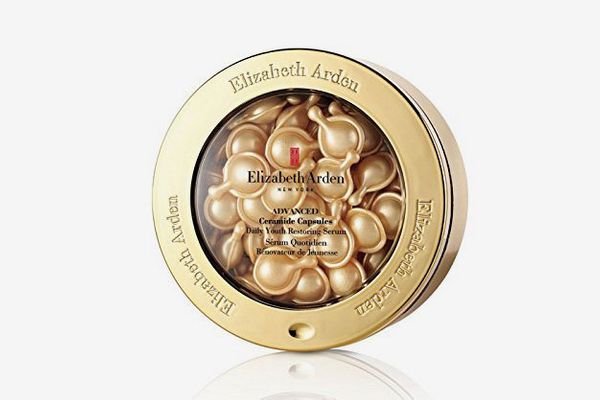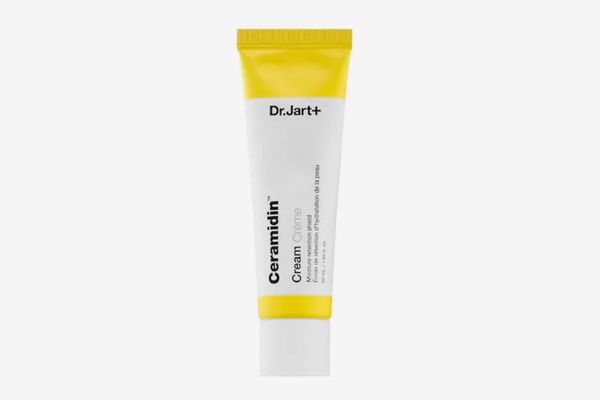
You can napalm your face with acids or nourish it with vitamin C, but if you want to keep your skin plump, healthy, and happy, what you really need is good, old-fashioned fat — specifically, ceramides. Just like fat makes food taste better, ceramides make your skin better, keeping it well-moisturized and looking fresh. And get this — your skin naturally makes them. The body is a magical thing … until it’s not.
In a cruel twist of fate, we all run out of ceramides as we get older. So how do you get more of the stuff into your skin-care diet? Read on for a guide to this under-the-radar face fat, including how it works and what products will help you replenish it.
What ARE ceramides, exactly?
Okay, picture the tiles in a shower. Those are your skin cells. Now picture the grout that holds them together. That’s ceramides. “If there isn’t enough grout between the tiles in your shower floor, then it won’t be able to keep water from leaking out of the shower,” says Dr. Joshua Zeichner (he’s a dermatologist, not a plumber, but we trust him). Ceramides, he explains, “seal the cracks between skin-cell tiles.” They keep your cells arranged into a matrix rather than a useless jumble, and they keep all the hydration from leaking out.
Our skin is more than half fat — we’re liking walking wagyu. We need all the “fat grout” to keep out the bad stuff (microbes, infection, pollution), seal in the good (water), and hold the whole skin suit together.
If all this grout stuff isn’t for you, think of ceramides as magnets. That’s the metaphor used by Karelle Messner, vice-president of Global Skincare Product Development at Elizabeth Arden. “These moisture magnets bond the skin cells together to create a barrier within the skin’s surface … creating a protective layer that plumps the skin and locks in moisture.” A compromised barrier lets in the baddies, but a healthy barrier acts like Gandalf in The Lord of the Rings and gets all “you shall not pass.” (Gandalf definitely could have used more ceramides.) Let the bad stuff in and you get infections, acne, more free radicals, more skin damage, premature aging — the lot.
“Everyone needs and uses ceramides naturally,” says Zeichner. He says “in people with dry skin and conditions like eczema, rosacea, and even acne, we know that ceramide levels in the skin are lower than they should be. This contributes to dryness, sensitivity and skin inflammation.”
Okay … so what’s the catch?
You know how everyone says your 30s are better than your 20s, because you finally have your shit together? Nobody told your ceramides. Just as you’re hitting your stride in life, these little long-chain lipids disappear (like gentle hangovers and a double-digit bedtime). Dr. Joyce Davis says “ceramide levels in our skin drop with age.” Messner confirms the bad news. She says “by the time you are in your 30s, you have lost about 40 percent of your skin’s ceramides, and by your 40s, you have lost 60 percent of your skin’s natural ceramides.”
Russak explains, “Thinning of the skin is a direct result of declining levels of ceramides affecting the elasticity and toughness of the skin, which results in the heightened appearance of fine lines — especially around the eyes and cheeks.”
But how do ceramides help my skin, exactly?
When your skin barrier doesn’t have enough fat, the hydration and moisture that keeps your face plump, supple, and comfortable can just evaporate into the atmosphere. There’s even an ominous-sounding name for this: TEWL, or transepidermal water loss. It leaves skin dehydrated, and the worst part is that you’re probably already dry (lacking lipids), since that’s how your skin gets dehydrated in the first place.
With a complexion short on ceramides, things like seasons and environmental factors will zap your already diminishing supply of these good fats because you don’t have the (fatty) defenses you need to keep that stuff at bay. One small Dutch study found a particularly steep drop in ceramide levels among participants between summer and winter. You’ve be warned. The weather, dry central heating and general low-humidity environments, air pollution, UV rays and sun damage … honestly, it sort of feels like simply being alive depletes ceramides in the skin, and that’s not even considering hormonal and genetic issues or diseases that affect skin integrity, like diabetes. Or user error (ahem, over-exfoliation).
So my ceramides are disappearing as we speak? Can’t I just buy some and rub them on my face or something?
Luckily, you can! The ceramides in beauty products are the spitting image of the real deal (a.k.a. skin identical), even in commonly used synthetic and plant-derived (phytoceramide) forms.
Go crazy and lace your skin-care regimen with them — they’re to skin care as butter was to Julia Child’s cooking. Ceramides are proven winners. Zeichner says “we know that applying ceramide containing products to the skin helps increase ceramide levels in the skin in general.” Ko says “any applied ceramide may have a benefit, even if the amount is slight,” and a Japanese study showed an increase in skin moisture content of more than 100 percent with ceramide use.
The professionals seem to agree that ceramides are pretty much all upside, no matter your routine. Messner says “ceramides can be applied day or night, typically in the serum step of your regimen. They can also be used throughout the day.” So slather them all over your face any time, any place … and don’t forget your body, lips, and hair.
Our verdict? No need for ceramides in your cleanser (you’ll just wash them away), but stock up on the stuff in serums, moisturizers, essences, masks, and treatments.
What if I want to nourish my skin from the inside out?
Russak says soy beans, eggs, dairy, wheat germ, and brown rice are good sources of ceramides. We Americans love downing supplements that claims to cure a problem, but Davis says popping pills to get your ceramides might not be the answer. She warns that “if you look online there is a lot of promotion of oral ceramides … but I think because these are lipids, we have to be very careful that we don’t play with someone’s cholesterol, triglycerides, their internal lipids — and potentially worsen heart disease or their lipid profile. Maybe hold off on the pills until the science on them is rock solid.
What if I want them to be really, really effective?
If you want ceramides to work optimally (of course you do, you little perfectionist) pair them with other fats. “Recent research has shown that while ceramides, cholesterol, and fatty acids are critical to skin-barrier repair on their own, all three actually work better together,” says Messner. Russak says, “Think of the intricate ratio of human stratum corneum lipids: 50 percent ceramides, 24 percent cholesterol, and 15 percent free fatty acids.”
Now go forth and smear good fat all over your face.
Shop the Story
It ain’t cheap, but this cream is packed with ceramides, fatty acids, and cholesterol in the perfect ratio. It’s billed as an anti-aging treatment but anyone of any age with dry or dehydrated skin could use it as a moisturizer.
This affordable, lightweight night cream is perfect for people whose complexions are on the oilier side, with added niacinamide to aide with acne, hyaluronic acid for plumping, and trademark ceramides to replenish lipids.
Use this moisturizer at night for its barrier repair and skin-smoothing, spot-fading, brightening properties thanks to a combination of ceramides and vitamin C and 0.1 percent retinol in this proper anti-aging formula.
This K-beauty face cream favorite keeps dry, dehydrated skin well-hydrated and moisturized all day, even when used without serums or treatments, with a rich texture thanks to ingredients like glycerin, ceramides, oil, and hyaluronic acid.
This is the OG ceramide product on the market and has a longtime loyal following. Biodegradable capsules are full of potent ceramide-infused serum and can be used as a serum or treatment step. The new formulation is oilier than the old one so might even suffice as a very light moisturizer in a pinch.
This stuff is always sold out at my local Sephora, it’s that good. It’s packed with shea and other serious moisturizing ingredients alongside five ceramides and will earn its keep in your bathroom cabinet during this year’s already unusually cold winter.
If you buy something through our links, New York may earn an affiliate commission.


